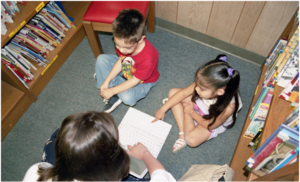By Dr. Ricardo Romo
Schooling during the pandemic lockdown is not going well for many Latino students. Truthfully, the majority rather be in the classroom than at home. According to the New York Times, more than 50 million children in the United States will be shut out of school for this Spring semester and for the foreseeable coming months in 2020.
Texas Latino children are especially at risk of losing out in the learning curve because many of their parents work in essential jobs and thus they have less time to spend as “teachers” in homeschooling. Latinos are 65 percent of the city of San Antonio’s growing population. The teaching process is being interrupted by the fact that Latino parents who are now “teachers” are also away much of the day as they serve as the essential workers of San Antonio and in other large cities.
 Latinos make up the majority of workers who deliver groceries, stock warehouses, serve as the security guards and nurses, and operate the fire trucks and ambulances of the city. They also make up the majority of workers who have lost their jobs in the restaurants, retail and tourism businesses of San Antonio. Local leaders worry that many of these businesses will not reopen, further disrupting the local economy and pushing more Latinos into poverty.
Latinos make up the majority of workers who deliver groceries, stock warehouses, serve as the security guards and nurses, and operate the fire trucks and ambulances of the city. They also make up the majority of workers who have lost their jobs in the restaurants, retail and tourism businesses of San Antonio. Local leaders worry that many of these businesses will not reopen, further disrupting the local economy and pushing more Latinos into poverty.
Thousands of the parents who are at home with their children do not have the academic preparation, the teaching skills, or access to their children’s teachers to assure the most meaningful instruction, especially at the higher levels. There is also the issue of internet access. The New York Times reported that an estimated 12 million schoolchildren, approximately one in five students, do not have internet access at home and thus have difficulty completing their online schoolwork assignments.
There is no shortage of love in most Latino homes, there is just a shortage of time and technology. My wife Harriett, [a retired teacher and college professor], and I recently walked around in our neighborhood and saw evidence of that love in a sign in front of a Latino home. It read, My Teacher Loves Me!. The teacher was of course, the mom or dad.
In Texas, Governor Abbott has cancelled classes for the remainder of the school year. That is certainly the right policy decision. As a retired educator and father of two children who attended schools in Texas, I know how difficult it is to supervise learning in the home. During the years that I taught at the University, I stayed home during the summer months. Our teachers do a great job and most of us are ill-equipped to fill in during the summer vacation months, especially in subjects like physics and math. Studies show that during the summer months many students will forget much of the math and many of the reading and writing skills they learned while in formal classes.
 Our Texas school children must stay at home until it is safe to return to the classrooms. This will not happen before September of 2020 and perhaps later. Thus, state leaders must find strategies to solve the learning lost. However, the gap in learning in Texas is a broader problem than homeschooling.
Our Texas school children must stay at home until it is safe to return to the classrooms. This will not happen before September of 2020 and perhaps later. Thus, state leaders must find strategies to solve the learning lost. However, the gap in learning in Texas is a broader problem than homeschooling.
In numerous Latino neighborhoods in San Antonio, school children are expected to learn in less than ideal circumstances. There are major school funding inequities in local school districts and several San Antonio schools have long suffered with crowded classrooms. School districts in Latino neighborhoods are paying their teachers far less than what they could earn in wealthier communities.
When it comes to the difficult budget allocations after the coronavirus, Texas school children must be our top priority. They are our future. While Texas expects a severe budget shortfall due to the sharp drop in sales taxes and dwilding oil revenues, state leaders must put education ahead of what they traditionally fund most– roads and prisons.
There is a pressing need for political action. The Governor should call for a special session of the legislature this coming fall. In the meantime, school districts must continue to find ways to assist the parents of school children who are currently learning at home.
Photo credits: Dr. Ricardo Romo


Recent Comments